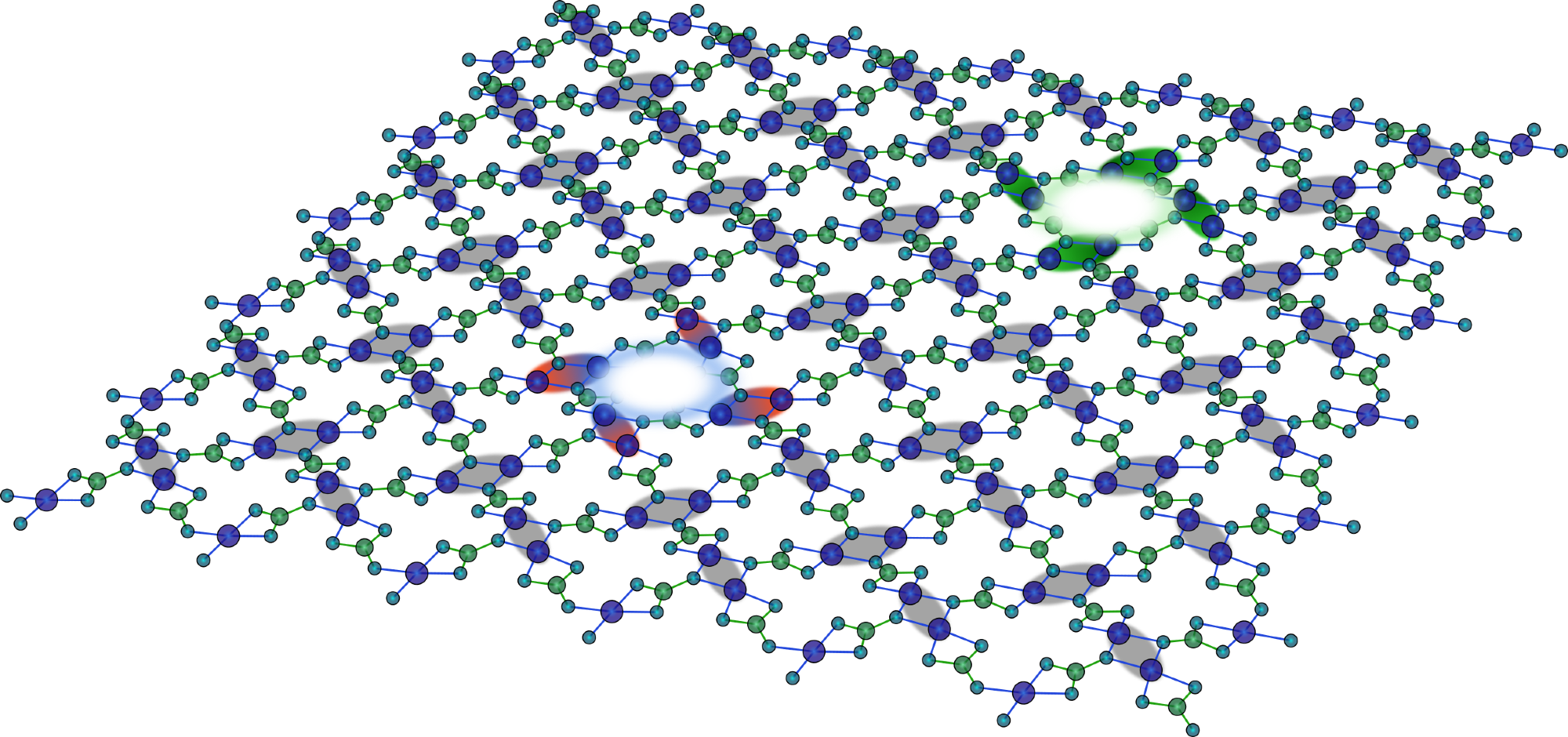Reviewed by Lexie CornerMar 19 2024
Under magnetic fields, quantum magnetic materials can exhibit new states of order. Recently, an international team conducted experiments at the Berlin neutron source BER II and its High-Field Magnet, gaining fresh insights into these unique states of matter. BER II ceased operation by the end of 2019. Results from data at BER II are still being published.
 Schematic illustration of a 2D spin-lattice with orthogonal orientation of spin pairs. Bound pairs of magnons are represented by the red/blue and green pinwheels. Image Credit: Ecole Polytechnique Fédérale de Lausanne
Schematic illustration of a 2D spin-lattice with orthogonal orientation of spin pairs. Bound pairs of magnons are represented by the red/blue and green pinwheels. Image Credit: Ecole Polytechnique Fédérale de Lausanne
Dr. Ellen Fogh is a physicist who leads a team at the Laboratory of Quantum Magnetism at the Ecole Polytechnique Fédérale de Lausanne (EPFL) and has now published intriguing new insights into quantum materials obtained in collaboration with colleagues from Japan, Qatar, and Switzerland.
Dr. Ellen Fogh said, “We measured in November 2019, our experiment was one of the very last ones performed on the High-Field Magnet at BER.”
Many effects in matter only become visible under extreme conditions, i.e., temperatures close to zero kelvin and magnetic fields above 20 Tesla.
Dr. Ellen Fogh, Physicist, Laboratory of Quantum Magnetism, Ecole Polytechnique Fédérale de Lausanne
An HZB team put up a unique High-Field Magnet at the neutron source BER II, which can reach over 26 Teslas, making it the ideal location to investigate these effects.
She said, “The evaluation took a lot of time.” This is because the results from neutron scattering require interpretation and do not instantly paint a picture. To do this, compelling theoretical models are needed.
Dr. Ellen Fogh said, “We played a game of ping-pong with a team of theorists, but now we have some very interesting results.”
Samples of SrCu2(BO3)2, a model system for perfect frustration in a two-dimensional (2D) spin system, were analyzed by Fogh and colleagues. It comprises spin pairs that have various effects on one another and are organized orthogonally on a square lattice.
Many non-conventional consequences stemming from this “ideally frustrated” geometry are explained in terms of entangled quantum states and associated excitations (magnons). Bose-Einstein Condensation (BEC) of magnons is the standard description of magnetic order in such materials.
We wanted to find out whether this magnon BEC also occurs in our model system at high magnetic fields or whether there is an alternative mechanism.
Dr. Ellen Fogh, Physicist, Laboratory of Quantum Magnetism, Ecole Polytechnique Fédérale de Lausanne
The neutron scattering experiment at the High-Field Magnet of BER II was ideally suited for this purpose. "We were able to measure spin excitations of SrCu2(BO3)2 up to 25.9 T and reproduce the experimental spectra with high accuracy using theoretical models," says Dr. Fogh.
The trials were conducted at ambient pressure and 200 mK, close to absolute zero. Under these extraordinarily high magnetic fields, a spin-nematic phase is generated, according to the analysis and interpretation of the measurement data. During this phase, bonded pairs of magnons are condensing instead of single magnons.
A condensate of bosonic Cooper pairs is the best way to understand the spin-nematic phase in SrCu2(BO3)2 according to an analogy to superconductivity.
The findings demonstrate that neutron scattering experiments conducted in exceptionally high magnetic fields offer a pathway to investigate previously unexplored realms of matter, particularly the correlated phases of many-body systems.
Fogh concluded, “Under conditions of strong frustration and controlled extremes, many new states and orders can still be found.”
Journal Reference:
Fogh, E., et al. (2024) Field-induced bound-state condensation and spin-nematic phase in SrCu2(BO3)2 revealed by neutron scattering up to 25.9 T. Nature Communications. doi.org/10.1038/s41467-023-44115-z